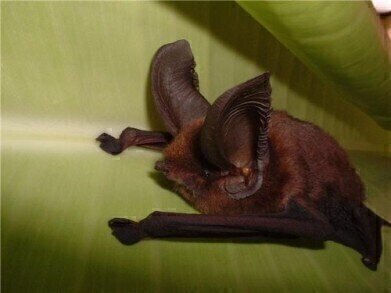-
 Two types of coronavirus were discovered in bats.
Two types of coronavirus were discovered in bats.
Bioanalytical
Sars-like coronavirus discovered in bats
Oct 31 2013
The origin of the severe acute respiratory syndrome (Sars) virus may have been uncovered in Chinese horseshoe bats.
Two coronaviruses similar to the Sars virus were found in this type of bat, suggesting that this could transfer from bats to humans.
Scientists from China, Australia, Singapore and the US worked with non-profit organisation EcoHealth Alliance to uncover the genome sequence that could point to the origin of the virus, publishing their results in the journal Nature.
They isolated and cultured a live virus discovered in these bats that binds to the human receptor ACE2, which is associated with Sars.
Results were gathered using genetic analyses gathered over the course of the year from a horseshoe bat colony uncovered in the Kunming region of China. They found that this group of bats alone carried at least seven different strains of coronavirus similar to Sars.
Director of emerging infectious diseases at the Wuhan Institute of Virology in the Chinese Academy of Sciences Dr Zhengli Shi said: "Since 2003 there has been disagreement about the origin of the virus that directly evolved into human SARS-CoV, the causative agent of the first emerging pandemic threat of the 21st century. Even though our team reported that bats are natural reservoirs of SARS-like coronaviruses in 2005, we have been searching for this missing link for 10 years, and finally we've found it,"
Previously it was suggested that the virus was not transferred directly from bats to humans but, instead, was passed to civets who then transmitted the disease.
Professor at the Department of Microbiology in the University of Iowa Stanley Perlman said that this experiment suggests that viruses in bats should continue to be looked at more closely. He suggested that there could be more of this diseases present in bats that could cross species.
The Sars virus broke out ten years ago in China, being recognised by the World Health Organisation in February 2003. Between November 2002 and April 2004 it is predicted that there were 8,096 cases worldwide.
Digital Edition
Chromatography Today - Buyers' Guide 2022
October 2023
In This Edition Modern & Practical Applications - Accelerating ADC Development with Mass Spectrometry - Implementing High-Resolution Ion Mobility into Peptide Mapping Workflows Chromatogr...
View all digital editions
Events
May 15 2024 Birmingham, UK
May 19 2024 Brno, Czech Republic
May 21 2024 Lagos, Nigeria
May 23 2024 Beijing, China
May 28 2024 Tel Aviv, Israel













